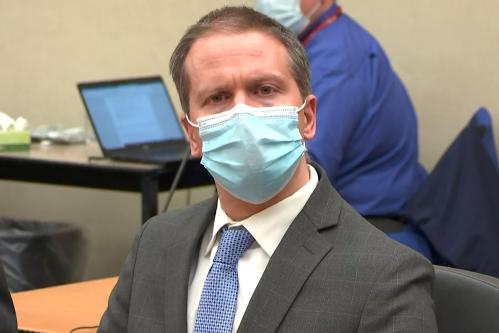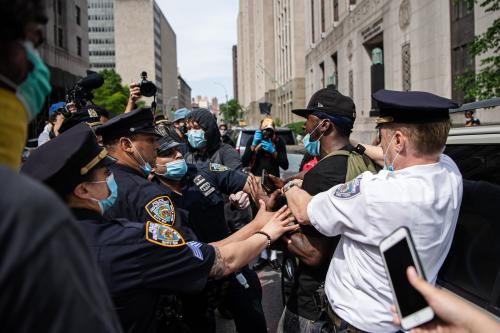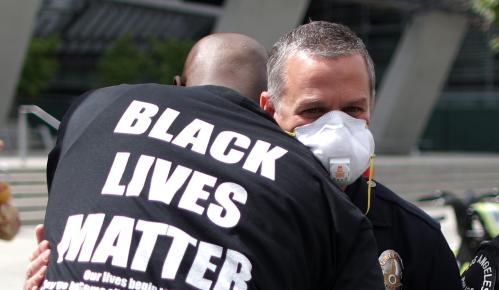For nine minutes and 29 seconds, former Minneapolis police officer Derek Chauvin held his knee on the back of George Floyd’s neck until the life left his body. This occurred while dejected onlookers raised visible frustration for what many correctly perceived to be a murder occurring in broad daylight on a major street. While observing, participating, and standing guard, other police officers seemed to be ok with what was occurring or did not have the courage to intervene to stop it and engage in an appropriate duty of care.
After being convicted of second and third-degree murder as well as manslaughter for the killing of George Floyd, Chauvin was sentenced to 270 months (22 years and 6 months). Chauvin will probably serve two-thirds or 15 years of this sentence. While some may view this chapter of police brutality closed, others know Chauvin is the tip of the iceberg regarding changes needed to improve law enforcement.
The city of Minneapolis paid out $27 million to the Floyd family for his wrongful death days before the start of the Chauvin trial in March. During the less than two week trial, police in the United States killed over 60 people. A person could watch a major league baseball game and a basketball playoff game and come to the realization that police probably killed a person at some point during that time span.
Chauvin’s actions were not isolated. Indeed, he did it previously. Since 2015, Chauvin is on record for kneeling on people’s necks and/or putting them in chokeholds at least six times. Of the people involved in these incidents, two were Black, one was Latino, one was American Indian, and two others were of an unknown race. In 2017, Chauvin kneeled on the back of a 14-year-old Black boy for 17 minutes. These incidents make up a small portion of the over 20 complaints that Chauvin received during his 19-year law enforcement career.
These facts may explain why Eric Nelson, Chauvin’s defense attorney, rambled off a series of “what ifs” during the sentence hearing that Chauvin allegedly stated over the past year. The what ifs focused on whether the officer should not have come in to work that day or not responded to the call. Interestingly, none of Chauvin’s what ifs included what clearly is the most important consideration: what if Chauvin pulled his knee off of Floyd’s neck when he stated he could not breathe?
How could Chauvin get away with this brutality for so long? Why didn’t anyone intervene or stop him? Why wasn’t he reprimanded or even fired? Chauvin was not simply a bad apple, but a bad apple that helped rotten the barrel and poison good apples that could have been, like the two early-career officers who watched him kill Floyd and participated in it. For all the good officers protecting and serving their communities, there are more Chauvins than there should be.
So, how should police departments ensure that officers like Chauvin do not brutalize our communities? Overall, accountability must be increased to ensure that these incidents become nonexistent rather than a regular occurrence. Focusing on duty to intervene legislation, malpractice insurance, and positive police outcomes are central.
Implement state-level duty to report programs
States need to have duty to intervene laws that protect police officers who report bad behavior. Moreover, simply having duty to intervene laws is not enough. Officers who report misconduct need protection from retaliation. I call it GAPP (Good Apples Protection program for law enforcement). This requires state legislatures creating an independent reporting and investigation program at the state level. If it stays local, officers will be less likely to report or more likely to be targeted for reporting. This recently occurred in Prince George’s County, Maryland (one of the 30 largest police departments in the country) when two officers reported that another officer used excessive force. In retaliation, some officers were told not to back up the officers who reported the excessive force. The two reporting officers just happened to be Black.
If there is a state or federal program for officers who report misconduct, officers may be more likely to intervene and report misconduct. The blue wall of silence does not simply exist because officers are loyal to the badge and each other. The blue wall of silence exists because there are consequences to breaching it. This is the same process that happens on streets plagued with violent crime. People who provide information to law enforcement are rarely given immediate protection for that information. Instead, they are further exposed to retaliation. In this regard, the same process of reporting and retaliation that operates in neighborhoods plagued with violent crime also operates in many of our police departments. This is a huge problem and needs to change.
Link law enforcement certification to malpractice insurance
Municipalities need to restructure civilian payouts for police misconduct. Cities and counties need to think through a plan that does not include using funding from general tax revenue to pay for misconduct settlements. While many states and municipalities are waiting to determine what will occur with The George Floyd Justice in Policing Act that aims to absolve qualified immunity for law enforcement, police department insurance policies and individual officer liability insurance may be the key regardless.
Municipalities and states can establish a certification program that requires officers to carry liability insurance. If they have engaged in misconduct, their insurance premium will be higher, just like drivers who are careless or reckless behind the wheel. If officers are unable to obtain liability insurance, they should not be able to obtain certification to work in law enforcement just like a person who is unable to obtain insurance cannot get a license.
Additionally, it is vital for municipalities to carry their own insurance policy on the police department to not simply throw officers under the bus and absolve the organizational structure that helped create the bad apples. This is important because municipalities are spending billions of dollars in misconduct settlements. Some small cities like Inkster, Michigan and large cities like Chicago do not have the funding to cover these misconduct settlements. Consequently, people’s property taxes are increased and cities take out “police brutality bonds” with very high fees and interests to cover these costs.
Replicate departments with low misconduct and low crime
Law enforcement finally needs to start replicating the changes that have taken place in cities like Newark and Camden. Newark police did not shoot a single shot in 2020 and recovered over 500 illegal guns. Camden had fewer shootings in 2020 than it did in 2019, one of the few cities in the country. Part of these positive outcomes are driven by the police department working with community activists to ensure transparency and accountability for law enforcement, which, in turn, gains the trust of people living in the community. These outcomes are also driven by oversight to ensure more accountability.
For too long, negative and deficit outcomes have driven law enforcement. It is time to change policing culture by scaling up positive outcomes. This is especially important since research documents that violent crime rates are unrelated to police killing rates. This suggests that we can decrease crime as well as decrease police killings and brutality. Only accountability, transparency, and equity can make this happen.







Commentary
How to ensure officers like Derek Chauvin do not work in law enforcement
June 25, 2021